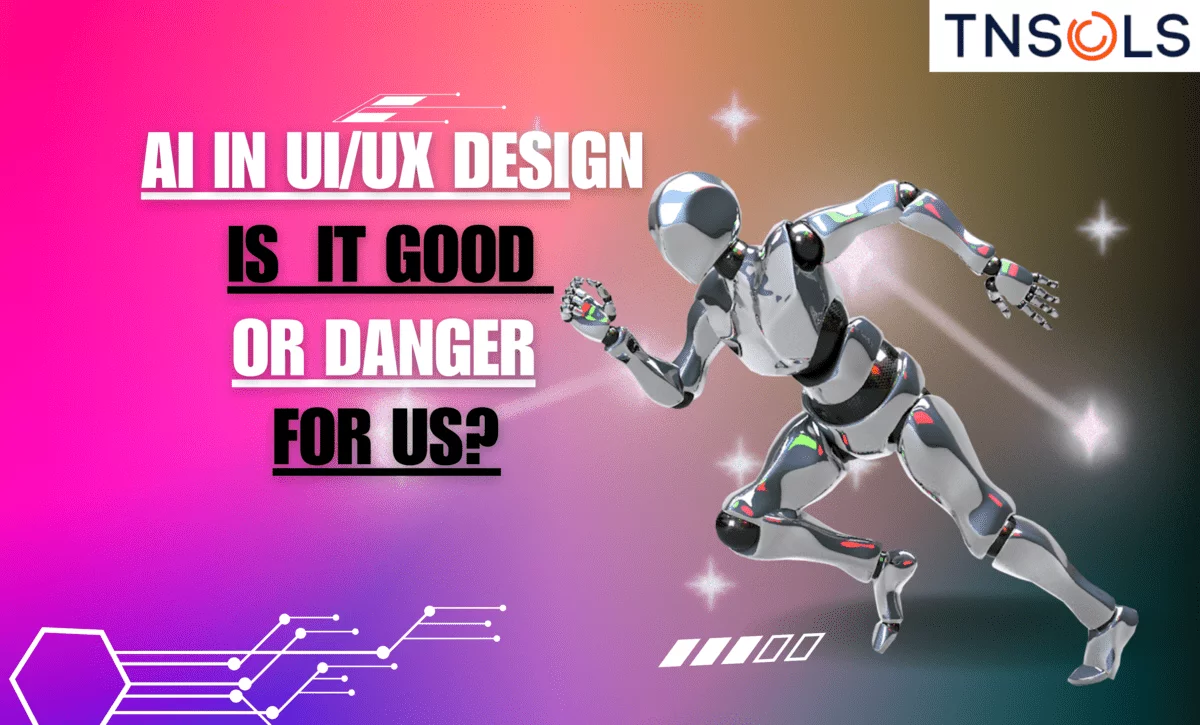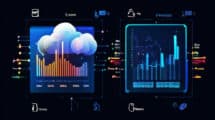Artificial Intelligence (AI) in the realm of User Interface (UI) and User Experience (UX) design has become a topic of significant discussion. As technology advances, we’ve come to accept that change is inevitable. However, this adaptability and openness to technological evolution often comes with reservations, especially when technology threatens to replace human jobs.
AI, as a powerful tool, has found its way into various industries and is now making waves in UI and UX design. This has raised questions: Is AI a blessing or a curse for UI/UX designers? Does its integration into UI/UX design bring more advantages or drawbacks? What AI tools are available for designers to enhance their work? As a leading UI/UX Design Agency, we aim to provide comprehensive answers to these questions and shed light on the impact of AI on UI/UX design.
Introduction to Artificial Intelligence (AI)
AI, also known as machine intelligence, is a subfield of computer science that deals with creating technology capable of making decisions and taking actions without human intervention. AI encompasses various technologies, including machine learning, computer vision, natural language understanding, natural language production, natural language processing, and robotics. It finds applications in industries such as finance, healthcare, autonomous vehicles, virtual assistants, and more.
The Evolution of AI
AI evolution can be categorized into three phases based on the extent of human-like intelligence they aim to mimic:
- Weak or Narrow AI: These AI systems are designed for specific tasks and lack the ability to generalize across various tasks. They are the most prevalent form of AI today.
- Strong or General AI: This category pertains to machines with the capability to learn and understand tasks akin to humans. However, this form of AI is still in the early stages of research.
- Super AI: These are fictional AI systems with capabilities surpassing those of humans in every task.
Currently, AI lies between narrow AI and general AI, indicating that it’s not fully human-like but continually evolving.
The Benefits of Using AI in UI & UX Design
AI integration into UI and UX design offers several advantages, including:
- Assistance in Data Analysis: AI effectively analyzes vast amounts of user data, providing valuable insights for designers to make informed decisions and create customized user experiences.
- Personalized UI/UX Designing: AI uses machine learning algorithms to analyze user data, enabling the creation of personalized design experiences that enhance user satisfaction and engagement.
- Efficient and Rapid Prototyping: AI-powered prototyping tools convert design concepts into interactive prototypes, saving time and enabling faster testing and iteration.
- Design Optimization for Enhanced Performance: AI identifies usability issues and optimization opportunities through user interaction analysis, resulting in improved user experiences.
- Automated Design Generation: AI can automatically generate design concepts based on user preferences, branding standards, and design parameters, boosting creativity and saving time.
- Accelerated Decision-Making: AI provides insights and predictions based on user data, enabling designers to make data-driven decisions quickly and improve design iterations.
- Competitive Advantage: Businesses that prioritize AI in UI/UX design can offer exceptional user experiences, gain a competitive edge, and enhance customer loyalty.
The Accuracy and Impact of AI in UI/UX Design
AI’s accuracy is dependent on the quality of the algorithms used. While AI has the potential to revolutionize UI/UX design by providing insights and automating tasks, it’s not without shortcomings. It’s crucial to verify AI-generated insights and data before implementing them, and it is important to remember that human creativity and qualitative aspects of design remain essential.
Drawbacks of Employing AI in UI/UX Design
The use of AI in UI/UX design comes with challenges, including:
- Lack of Comprehensive Understanding: AI may struggle to fully understand human emotions, motives, and cultural nuances, affecting its ability to create emotionally resonant designs.
- Loss of Control: AI automation may reduce the creative autonomy of designers, potentially leading to impersonal or less innovative designs.
- Bias Concerns: Biases present in AI training data can perpetuate in design recommendations, raising issues of equity and inclusivity.
- Limitations in Human Creativity: AI may excel in pattern detection but struggle to match the breadth of human creativity and innovative thinking.
- Dependence on Technology: Over-reliance on AI can hinder a designer’s judgment, intuition, and use of personal skills.
- Lack of Full Personalization: AI can face challenges in fully understanding each individual’s unique needs.
- Data Privacy and Security: AI relies on user data, raising concerns about data privacy and security.
AI in UI/UX: Companion or Competitor?
AI can serve as both a companion and a competitor to UI/UX designers:
- AI as a Companion of Designers: AI can automate mundane tasks, provide design recommendations, offer real-time feedback, and enhance the design process, ultimately assisting designers.
- AI as a Competitor of Designers: The automation of design processes may lead to concerns of job replacement. AI’s reliance on data and algorithms can limit creativity and personalization, potentially hindering design quality.
Top Ways to Implement AI in UI/UX Design
AI can be effectively applied in UI/UX design through various approaches:
- Chatbots: AI-powered chatbots enhance user interaction and provide customer support.
- Personalization: AI algorithms analyze user data to create personalized design experiences.
- Image and Video Recognition: AI can be used to recognize image and video content, improving user experiences.
- Predictive Analytics: AI enables predictive analytics to forecast user behavior and provide tailored recommendations.
- Content Creation: AI can automate content creation, saving time and improving quality.
A Look at the Top 5 AI-Powered UI/UX Design Tools
Several AI-powered tools are available to aid UI/UX designers:
- Khroma: An AI color tool that identifies and generates color schemes.
- Adobe Sensei: Assists with creative projects, offering photorealistic effects and intuitive content discovery.
- Adobe Firefly: Enhances Photoshop with generative fill functions for realistic image editing.
- Uizard: Generates app UI/UX designs from simple inputs, even for less experienced designers.
- VisualEyes: Provides design feedback similar to Grammarly for content, including attention maps, clarity scores, and areas of interest.
Conclusion
AI has the potential to be a transformative force in UI/UX design, offering insights, automation, and personalized experiences. However, designers must be aware of the limitations and potential drawbacks, ensuring that AI complements their creativity rather than replaces it. The key lies in striking a balance between human intuition and artificial intelligence to achieve effective UI/UX design.
At TNSols Agency, our UI/UX designers harness the power of AI to create exceptional user experiences. Contact us to explore our top-tier web design services and receive a personalized quote.






